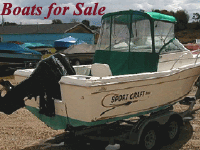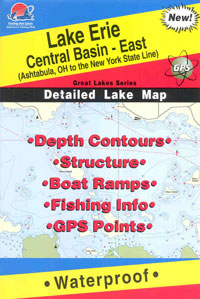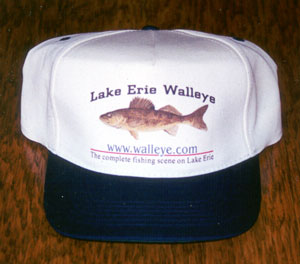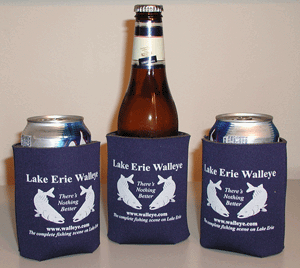Spring Fling with Monster
Pike
by Ron Anlauf
Hooking up with a big pike in shallow water is absolutely thrilling
and
 makes
all of the time and trouble it takes to get the job done worthwhile. On
the other hand; it really doesn't take that much time and it's not
that much trouble, not if you're doing the right things in the right
places. Armed with a little information and a handful of the
appropriate baits you too can position yourself to catch a fish of a
lifetime.
makes
all of the time and trouble it takes to get the job done worthwhile. On
the other hand; it really doesn't take that much time and it's not
that much trouble, not if you're doing the right things in the right
places. Armed with a little information and a handful of the
appropriate baits you too can position yourself to catch a fish of a
lifetime.
Peak conditions exist for catching every fish that swims and it's
usually a combination of heavy concentrations that come at a time
when the species in question is feeding heavily. Such is the case for
early season northern pike and is a scenario that begs to be exploited.
Finding the concentrations is the first big piece of the puzzle to
place and it usually isn't that difficult. The key is understanding a
pike's basic spawning needs and that includes flooded grasses and
vegetation. Typically you'll find suitable spawning grounds up an
incoming creek or river. Creeks that run through low lying swamps are
what we're really talking about, and is where most of the spawning will
take place.
Pike make their spawning runs right after ice out and by the time
most anglers can get to them the bulk have already come and gone, but
probably not that far. They'll make their runs, do their thing, and then
drop back into the main lake in close proximity of those very creek and
river mouths. They'll hang around and spend some quality time gobbling
up spawning perch, walleyes, and anything else that gets in the way. The
mouths of feeder creeks and rivers then are concentration points, and
areas that definitely should be checked out. More creeks means more hot
spots, and probably more pike.
From the mouths look for the first break where a shallow flat drops
into a deeper water. It doesn't have to be that deep, just enough to
help create a concentration within a concentration point. That doesn't
mean the pike will always be there, or that they won't go any shallower
when the conditions are right, it just gives you a good place to start.
Shallow cover like reeds and bull rushes in close proximity to the creek
mouths are another drawing card because they will often hold big schools
of spawning perch.
A hot technique for quickly working a break line includes trolling
with a big jig at warp speed. Team Crestliner member Jon Janousek of
Nisswa, Minnesota has been using the speed freak technique for years and
has tagged some pike of gigantic proportions. "It might seem a little
unorthodox and way too fast but it works. We'll tie on a 3/4 or 1oz
Northland Tackle Bionic Bucktail Jig and hook on a big sucker minnow and
get going. That means giving the 250hp Merc some extra throttle and
you're moving!" At that speed it takes a big jig to stay close to the
bottom even in shallow water, and is the key to being successful. With a
big enough jig and enough line out you can get the bait close to the
bottom but try not to let it drag. By watching the rod tip you'll see
when you start to hit bottom because it will start to pop back and pull
forward, so reel in the extra line until it runs smooth. Those no real
action to the presentation, except maybe the body of the sucker which
really shimmies at high speeds. If you can't get your hands on big
suckers don't worry; you can do as well if not better by using plastic,
like a Northland 5" Slurpies Jerk Shad.
It has a swimming whale tail that will give your bait plenty of
action. To rig the sucker or the Jerk Shad run the main hook from under
the jaw up through the head of the bait and fix the stinger treble on
top near the dorsal fin. With the stinger on top you'll run cleaner and
are less likely to pick up debris which will killyou're otherwise
perfect presentation.
If the fish just don't seem to be on the break it might be time to
move up shallow and try casting a bait more often associated with bass
fishing, and that's a spinnerbait. A 3/8oz tandem Reed Runner
spinnerbait is an excellent choice for working the shallowest water as
it will sink slower and be quick to get up on top and out of old debris
and vegetation. It can also be cast around and directly into reed banks,
as well as right up to old stands of bullrushes and do it without
constantly hanging up.
Even though shallow water pike can be extremely aggressive it's the
perfect time to drop in the MinnKota and be as stealthy as you can
because they can be spooked and spooked fish won't usually bite. If
possible, try to run the trolling motor at a constant speed because even
an electric can spook fish if it's stopping and starting.
So how big is big? Well it depends; On some bodies of water it's ten
pounds, on another fifteen, and on the really good water it's twenty
pound plus. The thing is it's all good when a plan comes together and is
about as much fun as you can have! See you on the water.






 makes
all of the time and trouble it takes to get the job done worthwhile. On
the other hand; it really doesn't take that much time and it's not
that much trouble, not if you're doing the right things in the right
places. Armed with a little information and a handful of the
appropriate baits you too can position yourself to catch a fish of a
lifetime.
makes
all of the time and trouble it takes to get the job done worthwhile. On
the other hand; it really doesn't take that much time and it's not
that much trouble, not if you're doing the right things in the right
places. Armed with a little information and a handful of the
appropriate baits you too can position yourself to catch a fish of a
lifetime.